In the ever-evolving world of digital marketing, email remains a cornerstone of customer engagement and brand communication. Two prominent players in this arena, Mailchimp and Emma, offer robust solutions for businesses seeking to elevate their email marketing strategies. As we delve into the intricacies of these platforms, we’ll explore how they stack up against each other and what unique features they bring to the table.
Understanding the nuances between Mailchimp and Emma is crucial for marketers aiming to make informed decisions about their email marketing tools. Both platforms have carved out their niches, with Mailchimp known for its comprehensive feature set and Emma praised for its design-focused approach. Let’s unpack the strengths and weaknesses of each to help you determine which might be the best fit for your organization’s needs.
Key Facts
- Mailchimp: Offers a free plan for up to 500 subscribers, with comprehensive automation capabilities, including pre-built workflows and customer journey builders.
- Emma: Pricing starts at $89/month for the Pro plan, emphasizing design and customization, making it ideal for users who prioritize aesthetics in their email campaigns.
- Prism Reach: An AI-powered SaaS solution designed to enhance email marketing through deep personalization, targeting increased engagement and higher revenue.
Comparing Titans: Mailchimp’s Versatility vs Emma’s Design Prowess
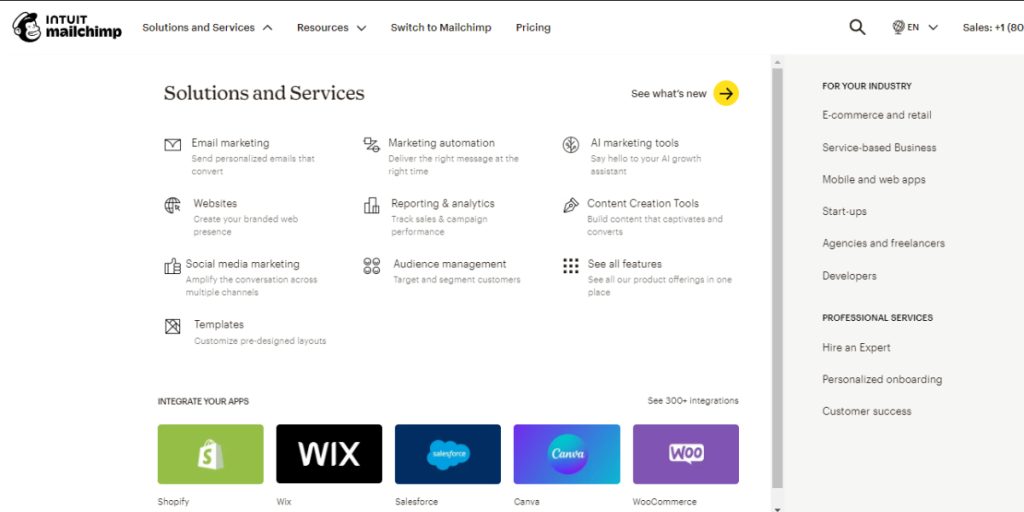

User Interface: Intuitive Experiences with Different Focuses
Mailchimp and Emma both offer user-friendly interfaces, but with distinct approaches. Mailchimp’s interface caters to users of all skill levels, featuring an intuitive drag-and-drop email builder that simplifies the creation process. This accessibility has made Mailchimp a popular choice among both novice and experienced marketers. TechRadar highlights this strength, noting, “Mailchimp’s user-friendly interface makes it a go-to choice for beginners and seasoned marketers alike.”
In contrast, Emma provides a clean, structured dashboard that prioritizes simplicity and ease of use. This streamlined approach is particularly appealing to users who value efficiency in their workflow. Emma’s focus on a clear, uncluttered interface allows users to navigate the platform with ease, making it an attractive option for those who prefer a more straightforward email marketing experience.
Email Templates: Versatility vs. Design-Centric Approach
When it comes to email templates, Mailchimp and Emma take different approaches to meet user needs. Mailchimp offers an extensive library of customizable templates that can be modified without requiring coding skills. This versatility is a significant advantage for businesses looking to maintain brand consistency across various campaigns while having the flexibility to create diverse email designs.
The ability to easily customize templates makes Mailchimp suitable for businesses with varying design needs and skill levels. On the other hand, Emma focuses on providing fewer but high-quality, design-centric templates. As noted by One Hour Professor, “Emma’s templates are particularly noted for their aesthetic appeal, making it an excellent choice for brands that prioritize visual impact in their email marketing.” This emphasis on design makes Emma particularly attractive to businesses that place a high value on the visual aspects of their email campaigns.
Automation Capabilities: Complex Workflows vs. User-Friendly Tools
Automation is a critical component of modern email marketing, and both Mailchimp and Emma offer robust solutions in this area. Mailchimp’s advanced automation features include pre-built workflows and sophisticated customer journey builders. These tools allow for the creation of complex email sequences, catering to businesses with intricate marketing strategies. The platform’s ability to handle detailed automation processes makes it suitable for companies looking to implement highly personalized and targeted email campaigns.
Emma, while also offering strong automation tools, focuses more on ease of setup and management. This approach makes Emma’s automation features more accessible to users who may not require extremely complex workflows. The choice between Mailchimp and Emma in terms of automation may ultimately depend on the level of complexity required in a business’s email marketing strategies and the user’s comfort level with advanced automation tools.
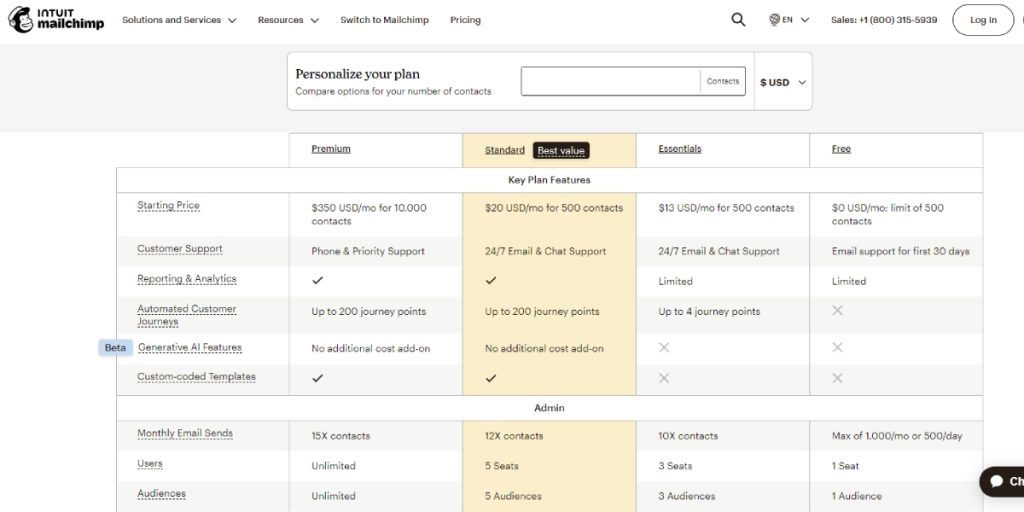
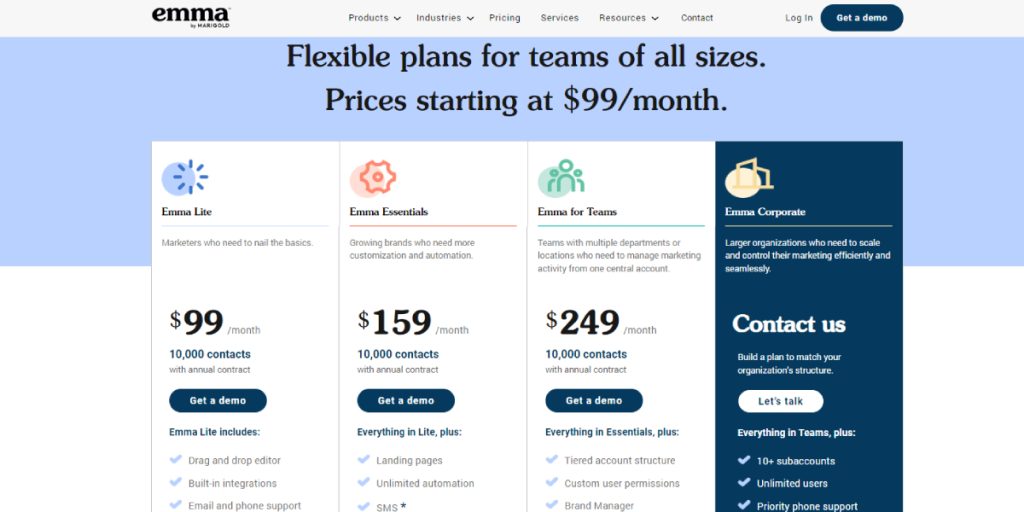
Hidden Gems: Enhancing Your Email Marketing Strategy
Beyond the well-known features, both Mailchimp and Emma offer lesser-known but highly effective strategies that can significantly enhance your email marketing campaigns. Here are five hidden gems to consider:
1. Utilize Mailchimp’s Creative Assistant
Mailchimp’s Creative Assistant is an AI-powered tool that generates custom graphics based on your brand profile. This feature saves time and enhances the visual appeal of your emails, which can significantly improve engagement rates. Many users overlook this tool, missing out on its potential to make their campaigns more visually compelling.
2. Leverage Emma’s Custom User Permissions
For teams managing multiple locations, Emma allows you to set specific permissions for users. This ensures that only authorized personnel can send emails, maintaining brand consistency and reducing errors. This feature is particularly useful for larger organizations that require strict control over their email marketing activities.
3. Implement Advanced Segmentation in Mailchimp
While many users stick to basic segmentation, exploring Mailchimp’s advanced options can lead to more targeted campaigns. This includes segmenting by user behavior or engagement levels, which can dramatically increase open and click rates. Advanced segmentation allows marketers to tailor their messages more precisely, enhancing the relevance and effectiveness of their campaigns.
4. Explore Emma’s Integration with Industry-Specific Tools
Emma has tailored integrations for various industries, such as fitness and non-profits. Utilizing these integrations can streamline your marketing efforts and enhance the effectiveness of your campaigns by connecting with tools that are specifically designed to meet the unique needs of your industry.
5. Take Advantage of A/B Testing Features
Both Mailchimp and Emma offer A/B testing, but many users do not fully utilize this feature. Regularly testing different subject lines and content can lead to substantial improvements in campaign performance. A/B testing helps in identifying what resonates best with your audience, allowing for data-driven decisions to optimize your email marketing strategy.
Innovative Solutions by Prism Reach
While Mailchimp and Emma offer robust traditional email marketing solutions, Prism Reach emerges as an innovative alternative that leverages AI to take personalization to the next level. Unlike the standard segmentation offered by Mailchimp and Emma, Prism Reach uses sophisticated AI algorithms to create detailed user avatars, enabling hyper-personalized newsletter content based on a wide array of factors including location, engagement history, and predicted interests.
Upgrade Your Email Marketing with AI Personalization!
Key Features
- AI-Powered Personalization:
- Content Clustering: Utilizes both open and proprietary AI models to categorize content effectively.
- User Avatars: Enriches user data for creating highly personalized profiles.
- Personalized Introductions: Generates custom introduction paragraphs for each subscriber using advanced data analytics.
- Optimal Sending Times: Uses predictive analytics to determine the best times to send newsletters, maximizing subscriber engagement.
- Seamless Setup and Integration:
- Quick Setup: The platform can be integrated within 10 minutes, making it user-friendly.
- One-Click Uploads: Facilitates easy migration of existing subscriber lists.
- AI-Enhanced Sign-Up Forms: Designed to increase sign-up rates through AI-generated content tailored to the user’s context and improve GDPR compliance.
- Dynamic Content Selection: Automated audience-tailored content like trending articles or product suggestions.
- Advertising and Swap Networks:
- Targeted Advertising: Provides a platform for targeted advertising similar to major online ad networks.
- Mutual Promotion: Facilitates mutual promotion among publishers, broadening content reach and enhancing subscriber engagement.
- Advanced AI Features: Includes anti-spam checks and a focus on high deliverability, crucial for maintaining engagement levels and avoiding spam filters.
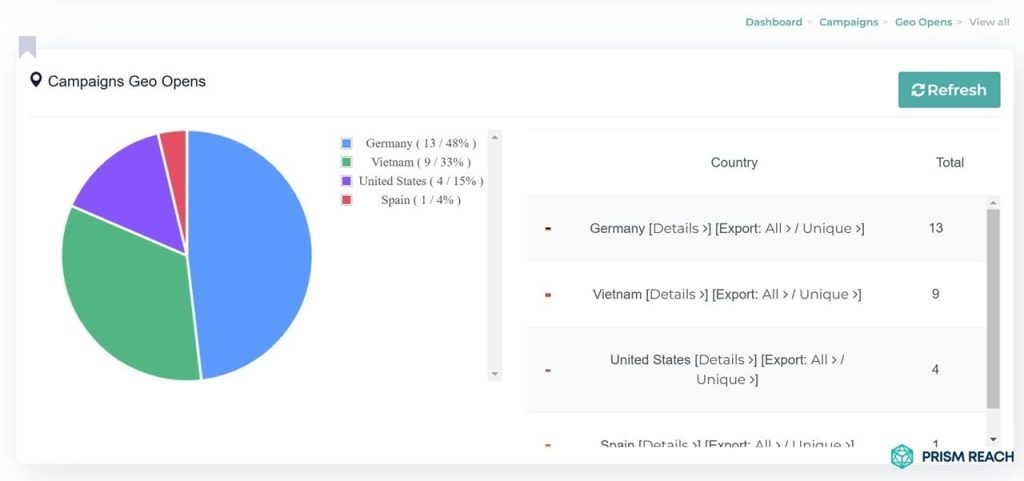
Main Features Comparison
Mailchimp’s Comprehensive Feature Set
- Extensive Automation Capabilities
- Advanced Segmentation Options
- Creative Assistant for Custom Graphics
- Landing Page Builder
- Data-Driven Insights and Analytics
Emma’s Design-Focused Approach
- High-Quality, Design-Centric Templates
- Custom User Permissions for Team Management
- Industry-Specific Integrations
- Approval Workflow for Quality Control
- User-Friendly Automation Tools
Advanced Strategies for Enhanced Email Marketing
Employ Behavioral Targeting in Mailchimp
By setting up automated emails triggered by specific user actions, such as cart abandonment or article likes, you can create timely and relevant communications that boost conversions. Behavioral targeting ensures that your messages are aligned with the user’s current journey, increasing the likelihood of engagement and sales.
Use Mailchimp’s Landing Page Builder
This often-overlooked feature allows you to create landing pages that can capture leads outside of email campaigns. It integrates seamlessly with your email marketing efforts, providing additional touchpoints for audience engagement and increasing conversion opportunities.
Maximize Emma’s Approval Workflow
For larger teams, utilizing Emma’s approval workflow can streamline the process of reviewing emails before sending. This ensures quality control and adherence to brand guidelines across multiple locations, maintaining consistency and professionalism in all your email communications.
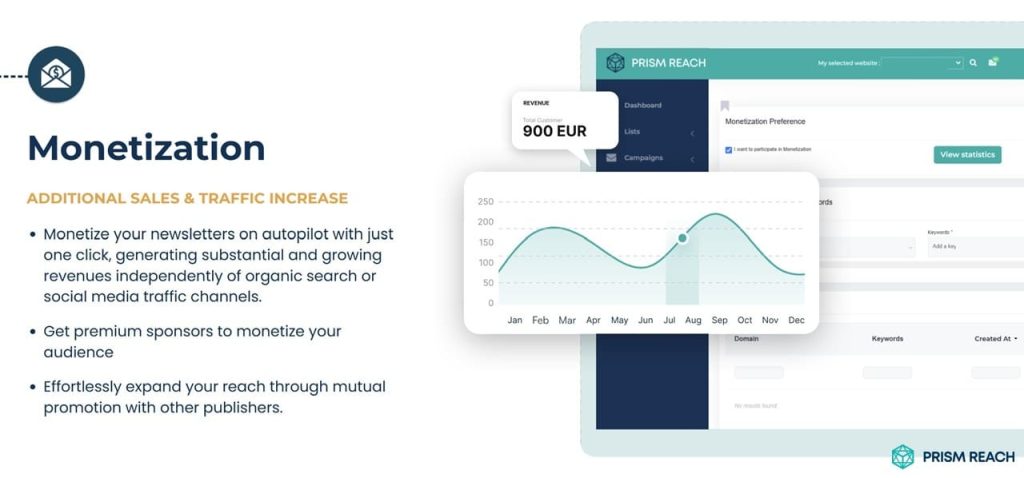
Why Choose Prism Reach?
Prism Reach offers several advantages that set it apart from traditional email marketing platforms like Mailchimp and Emma:
- Increased Engagement: Publishers report up to 40% higher engagement rates due to the personalized nature of the content.
- Higher Revenue: Tailored advertising and efficient content targeting lead to higher monetization rates for published newsletters.
- Improved Productivity: Automation and AI-driven insights significantly reduce the time required to create and manage campaigns.
Prism Reach: The Future of Email Marketing
Prism Reach represents a significant advancement in personalized email marketing technology. By leveraging AI to understand and predict subscriber preferences, Prism Reach delivers content that is not only relevant but also timely, enhancing the overall impact of digital marketing campaigns and fostering stronger connections between publishers and their audiences.
User Journey with Prism Reach
The typical user journey involves a streamlined process where subscribers sign up through a customized form, select their interests, and then receive personalized newsletters that cater specifically to their preferences. This journey not only enhances user satisfaction but also boosts the likelihood of long-term subscriber retention.
Compliance and Data Privacy
Prism Reach emphasizes GDPR compliance and hosts data within Europe, adhering to the highest standards of data protection. This focus on privacy is crucial for building trust with users and complying with international regulations.
Future Prospects
Looking ahead, Prism Reach aims to expand its technology into the eCommerce sector and explore new ways to leverage AI for broader marketing applications. The company is committed to continuous improvement of its AI algorithms, ensuring that its solutions remain at the cutting edge of technology and marketing innovation.
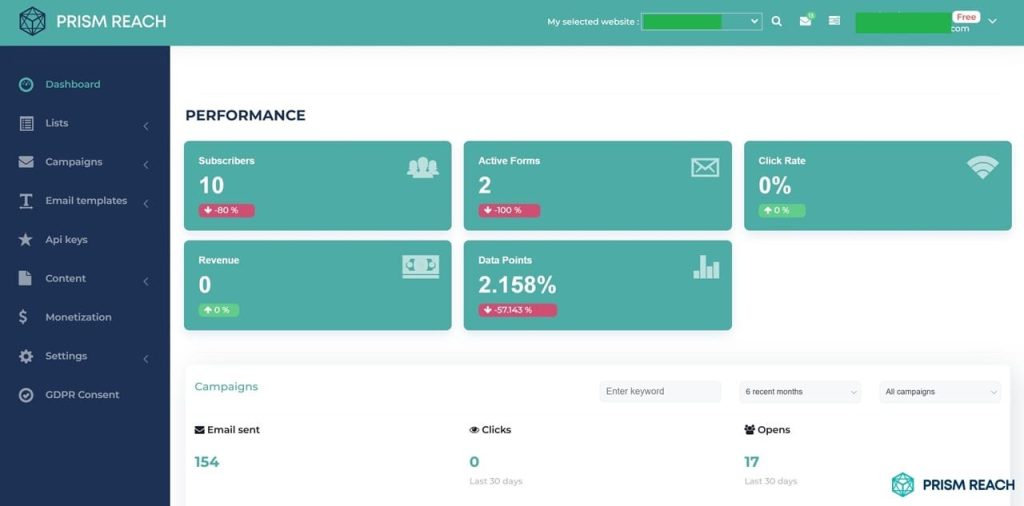
Conclusion
In the Mailchimp vs Emma comparison, both platforms offer strong email marketing solutions with distinct advantages. Mailchimp stands out for its comprehensive feature set, extensive integrations, and scalability, making it suitable for businesses of various sizes and industries. Emma shines with its design-focused approach, personalized support, and user-friendly interface, appealing to brands that prioritize aesthetics and hands-on assistance.
Ultimately, the choice between Mailchimp and Emma will depend on your specific business needs, budget, and marketing goals. For those seeking a balance of features and affordability, Mailchimp may be the preferred choice. For businesses prioritizing design and personalized support, Emma could be the better fit.
However, for organizations looking to leverage cutting-edge AI technology for deep personalization, Prism Reach presents an innovative alternative that could potentially outperform traditional email marketing platforms in terms of engagement and ROI. As the email marketing landscape continues to evolve, considering all options, including emerging AI-driven solutions like Prism Reach, will be crucial for staying ahead in the competitive digital marketing arena.